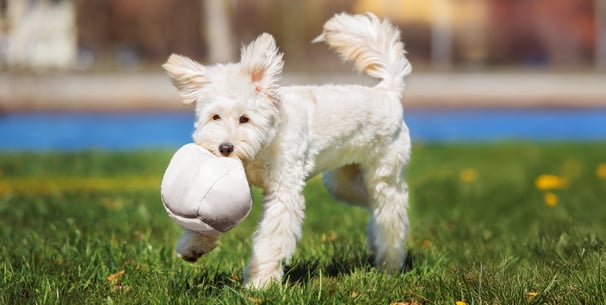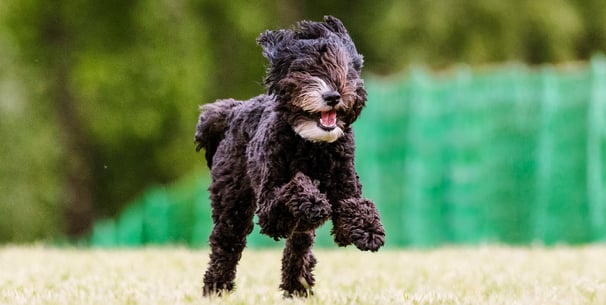Pug Barking - Why Pugs Bark a Lot & How to Help Stop It
Index:



Introduction
We all love our cheeky Pug companions, but sometimes their bark can feel like it's non-stop.
If your Pug seems to bark a lot, you're in good company. These little clowns of the dog world have big personalities packed into small bodies.
They might be barking so much to tell you something important, or it could just be their way of joining the chat.
Let's look at why this happens and how we can help your furry friend find a bit more peace and quiet for your ears, too.
Key takeaways
Pugs often bark as an alert or to get your attention, but excessive barking might signal boredom or health worries.
Training with positive reinforcement can teach your Pug to stop barking when it's not needed.
Mental stimulation like puzzle toys and regular playtime helps release pent up energy and promotes calm behaviour.
Always check with a vet if barking changes suddenly, as it could be linked to underlying health issues common in brachycephalic breeds.
Socialise your pup early to build confidence and reduce barking behaviour from fear or excitement.
Why do Pugs bark so much?
Pugs have a reputation for being vocal little souls. It's part of what makes them so endearing, like having a tiny comedian in the house who comments on everything.
But when the Pug’s vocalisations turn into excessive barking, it can leave us scratching our heads.
We know Pugs are generally friendly and loving, but their breed traits play a big role here.
These dogs come from ancient China, where they were treasured as lap dogs for royalty.
Today, the American Kennel Club describes them as charming and mischievous.
Their alert nature means they may bark at anything they see or hear, from the postman to a leaf blowing by. It's their way of saying, "Hey, something's happening!"
Common reasons for excessive barking in Pugs
Let's break it down. Pugs will bark for a few key reasons, and understanding them helps us respond better.
Alert barking: Your Pug might be barking up a storm because they spot strangers or hear odd noises. It's instinctual, like a built-in alarm system.
Expressing excitement: When you come home, that joyful bark and whine mix shows how thrilled they are. Who wouldn't smile at that?
Get your attention: If your Pug is barking to demand play or food, it's their cheeky way of chatting. We can't blame them; they're the centre of attention at most times.
Boredom or pent-up energy: Small dogs like Pugs need outlets, or they turn ' barky '. A lack of activity can lead to increased barking.
Separation anxiety: Being alone might mean your dog barks more, as Pugs crave company.
Sometimes, it's just the breed. Compared to quieter dogs, Pugs aren't the biggest barkers, but they're not silent either.
They’re kind of at the “high end of moderate” if that makes sense.
Is excessive barking normal in Pugs?
Not always. While some vocalisation is fine, too much can point to issues.
Your Pug may bark a lot if they're not getting enough exercise or if something's bothering them.
We see this in many canine friends, but brachycephalic breeds like Pugs have specific needs.
Their flat faces can make them prone to breathing troubles, which might add to frustration and barking issues.
If your older Pug starts barking at night, it could be age-related.
Older dogs sometimes develop canine cognitive dysfunction, like a fuzzy memory, leading to confusion and more noise.
It's heartbreaking, but gentle care can help.

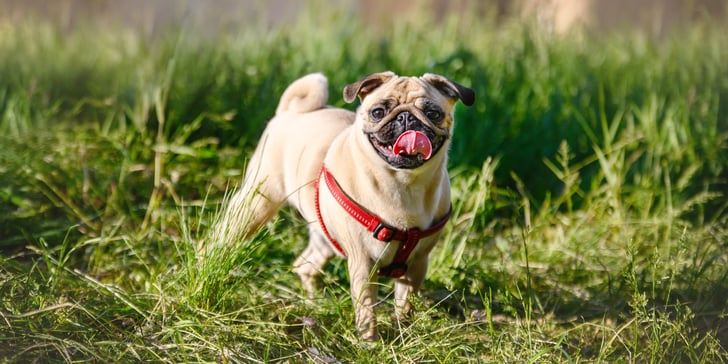

Health issues that might cause barking
Sometimes, barking stems from discomfort. If your Pug is barking because they're in pain, it's time to listen closely. Common reasons include dental problems or joint aches, but skin troubles are big for this breed.
Pugs often deal with skin fold dermatitis due to their wrinkly faces and bodies. This can cause itchiness and irritation, making your dog whimper or bark to show unease.
In the United Kingdom, vets see this a lot. According to the PDSA, skin infections in the folds around the face and tail are common, needing regular cleaning to prevent soreness.
For tips on keeping those folds clean, read our post on how to groom your Pug.
Additionally, research from the Royal Veterinary College shows Pugs have high risks for skin conditions, among other health woes. Dermatitis from skin folds leads to redness and hair loss, which might make your Pug restless and vocal.
If you spot signs like scratching or red patches, chat with your veterinarian. Early care keeps things from worsening.
Other issues, like allergies, can trigger scratching, uneasiness, and increased barking behaviour.
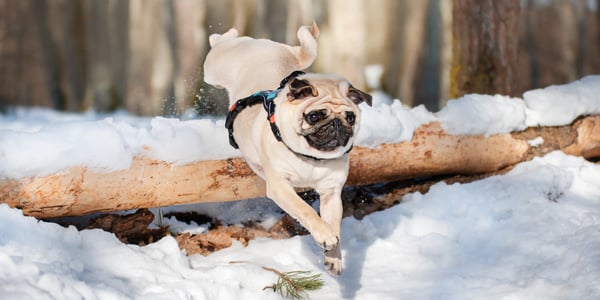


How to help your Pug stop barking
Good news: We can guide your Pug to stop barking with kind methods. It's about building trust and fun, not scolding.
Effective training tips
Start with positive reinforcement. When your dog is quiet, reward with treats or praise.
Teach your dog to respond to a cue like “quiet”. Say “quiet” calmly when they stop barking, then give a treat. Consistency is key, we all slip up, but stick with it.
For puppy barking, begin early. Socialise your pup to new sights and sounds to cut down on fear-based noise. Our guide on socialising your puppy has great tips.
Use distractions. If your Pug starts barking, redirect with a toy or walk. Puzzle toys are brilliant for mental stimulation, keeping their mind busy and reducing boredom barks.
Daily routines to promote calm
As we have discussed, exercise matters. A tired Pug is a calmer one. Short walks and playtime help burn energy without overdoing it, given their breathing.
Here's a quick, handy guide:
If barking persists, consider a behaviourist. They can spot patterns we miss.
Waggel members get access to our in house behavioural expert, Junior so check your account for more info.
For more on understanding barks, you can also explore what your dog’s barks mean.
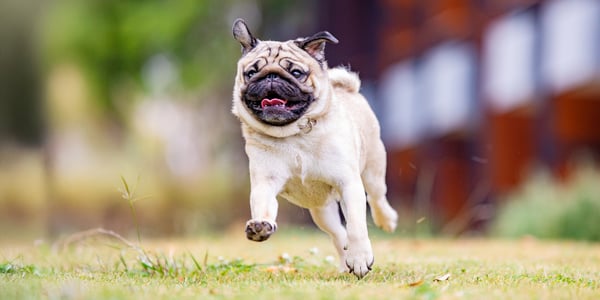


When to see a vet for barking issues
Don't wait if barking changes suddenly. A dog may howl or whine more with pain. Take your Pug to the vet if you notice:
Increased barking with limping or lethargy.
Barking at night is a new habit for your pet.
Signs of dementia, like pacing or confusion.
Regular check-ups catch underlying health problems early. For breed-specific care, our Pug breed guide covers more.
If allergies or mange are suspected, tests can help. We always suggest Pug pet insurance for peace of mind.

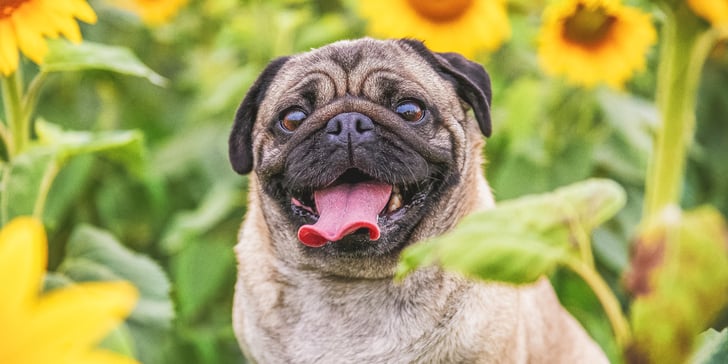

Living happily with a vocal Pug
Pugs aren't especially yappy like some other small dogs, but they do love to chat. However, with patience and love, you can turn down the volume.
Imagine your Pug curled up quietly, content after a good play session; that's the goal.
Mix in variety, like different training methods or toys, to keep things fresh.
If your Pug has a unique coat, learn about Pug colours for grooming tips that might ease skin woes.
For temperament insights that tie into barking, read our Pug dog breed temperament post.
We hope this helps you and your Pug dog enjoy quieter days. Remember, every bark is a message, and we're here to decode them together.
Waggel Pet Insurance
Need more help? You're in luck if you're a Waggel Pet Insurance member. Along with our excellent coverage, we offer access to a 24/7 online vet to answer all your sticky questions, especially if you need grooming assistance.
Not a member? Why not get a quote now and cover your furry friend for a range of illnesses, all while enjoying our amazing perks and rewards.
Want more like this?
Get updates from us with helpful info, advice, answers to frequently asked questions and much more.
Index:
Related posts:
Get your quote
Along with our excellent coverage, we offer access to a 24/7 online vet to answer all your sticky questions.
